Storm Damage
editBy Matilda •
You might have been forgiven for thinking that our prehistoric buildings, with their wattle and daub walls and thatched roofs, wouldn’t survive the record-setting winds that ravaged the UK recently. But all of our Stone Age, Bronze Age, Iron Age, and Dark Age structures have survived impressively well!
In this video, Trevor, our Project Archaeologist, surveys the damage, and considers what lessons we can learn from the way our buildings stood up to the storm.
A Site Tour of the Damage
Starting in the Stone Age, the big Horton house looks almost untouched. This rectangular hall, only completed last year, seems to have suffered little more than a few stray pieces of thatch. A Stone Age community living in a house like this may actually have been less disrupted by a big storm than many modern families dealing with power cuts were!
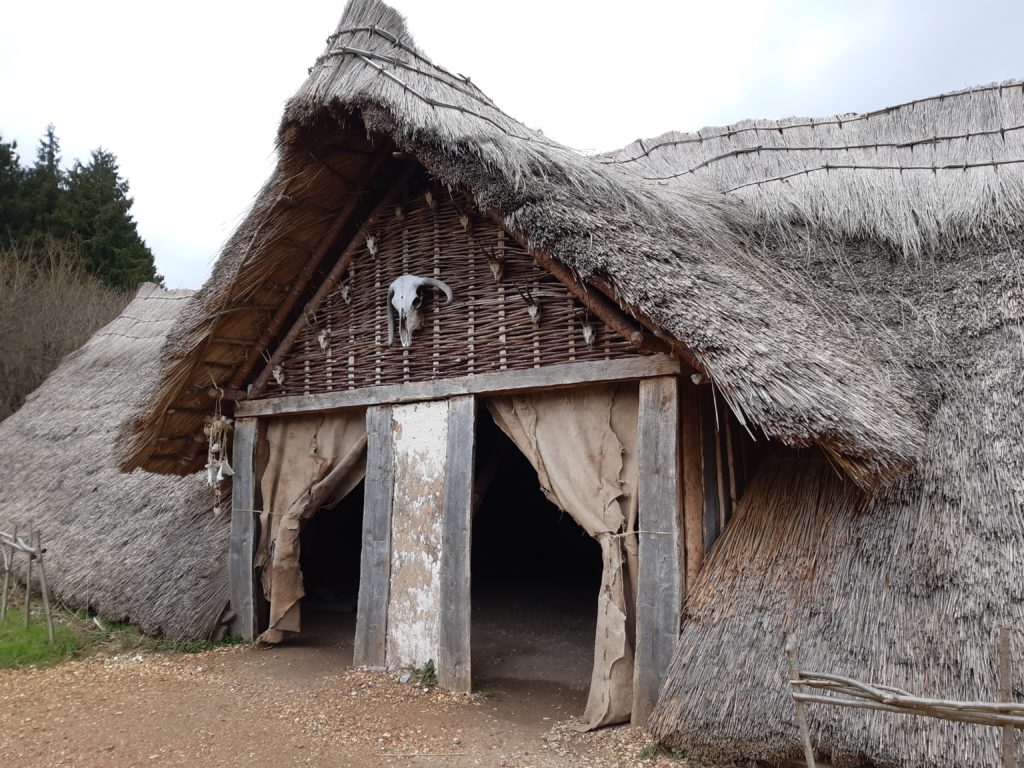
The Stone Age outbuildings fared less well, suffering significant damage to the corners of their roofs. But we’re seeing the damage as a unique opportunity to continue our work in experimental archaeology, by studying the damage and drawing conclusions about the materials and design of the buildings. From this damage, we can make inferences about the weak points of their buildings’ design, and start to experiment with potential solutions that Stone Age peoples would have had available to them.
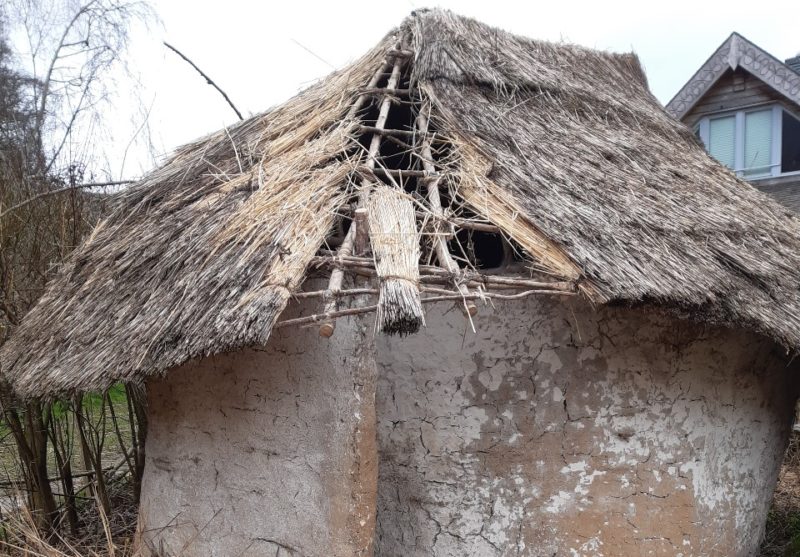
The Bronze Age roundhouse, which we built in conjunction with the veterans of the Ministry of Defence’s Operation Nightingale program and completed late last year, seems almost completely unscathed. This house is our most exposed building, and took the full force of the wind yesterday. But implacable and untouched, it doesn’t even look like it knows a storm happened!
This is a unique building at Butser Ancient Farm, as not only does it have a central post (in keeping with the archaeology), but each wall has been constructed using different techniques and materials. You can see this experiment in our Rebuilding the Bronze Age documentary series, which follows the entire construction of this building. Whether these quirks in the roundhouse’s design could have influenced its amazing durability is something we’re looking into.

The Iron Age village is where the majority of the damage was done by the storm, with chunks of thatch missing from the sides of roofs, as well as damage to the very top. Unfortunately, our largest and most iconic roundhouse is one of the most damaged. This was also true of the last great storm the Farm weathered, in 1987, when the largest roundhouse suffered similar damage to its entranceway. This time, as then, even though there is a significant number of repairs to be made, we’re honestly just relieved that none of our houses were affected structurally in the gale.
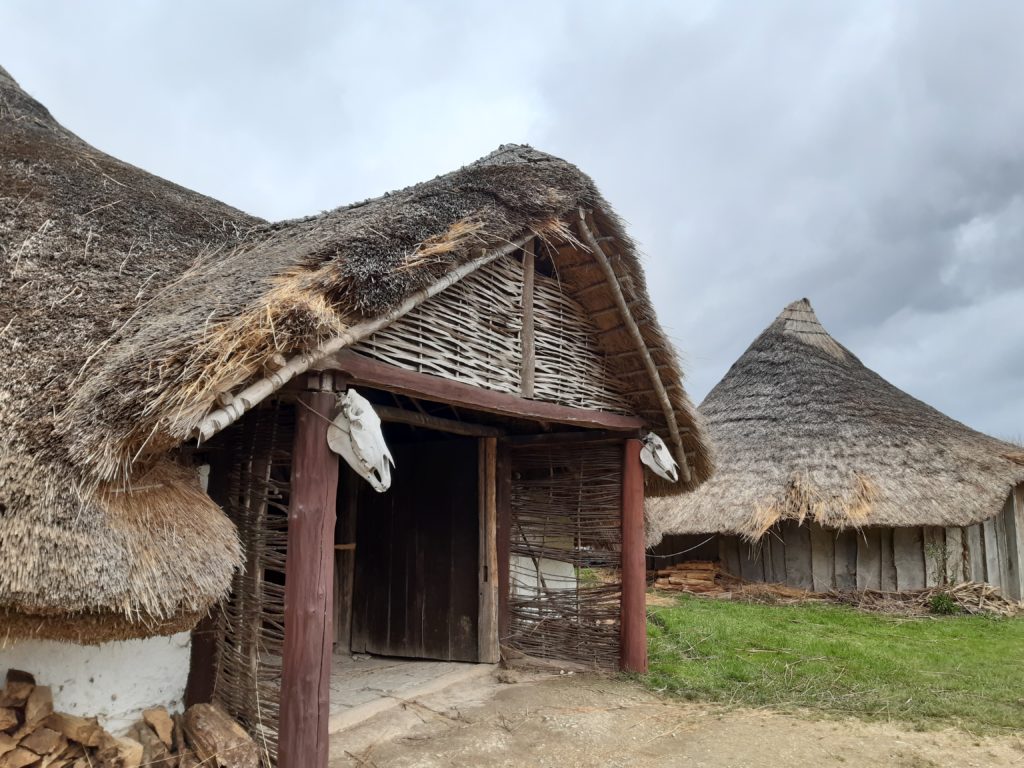
Perhaps curiously, the Iron Age roundhouse known as the Moel y Gerddi seems as undamaged as the Bronze Age house, despite being considerably older. We’ve been considering various possible reasons for the house’s impeccable survival, including the time it was last re-thatched, the shape of the roof, and the different thatching style used on the house. This kind of experimental work is precisely what Butser Ancient Farm was established to do – recreating archaeology and drawing conclusions from the result – and the recent storms have proved a unique opportunity to learn about these buildings’ durability.
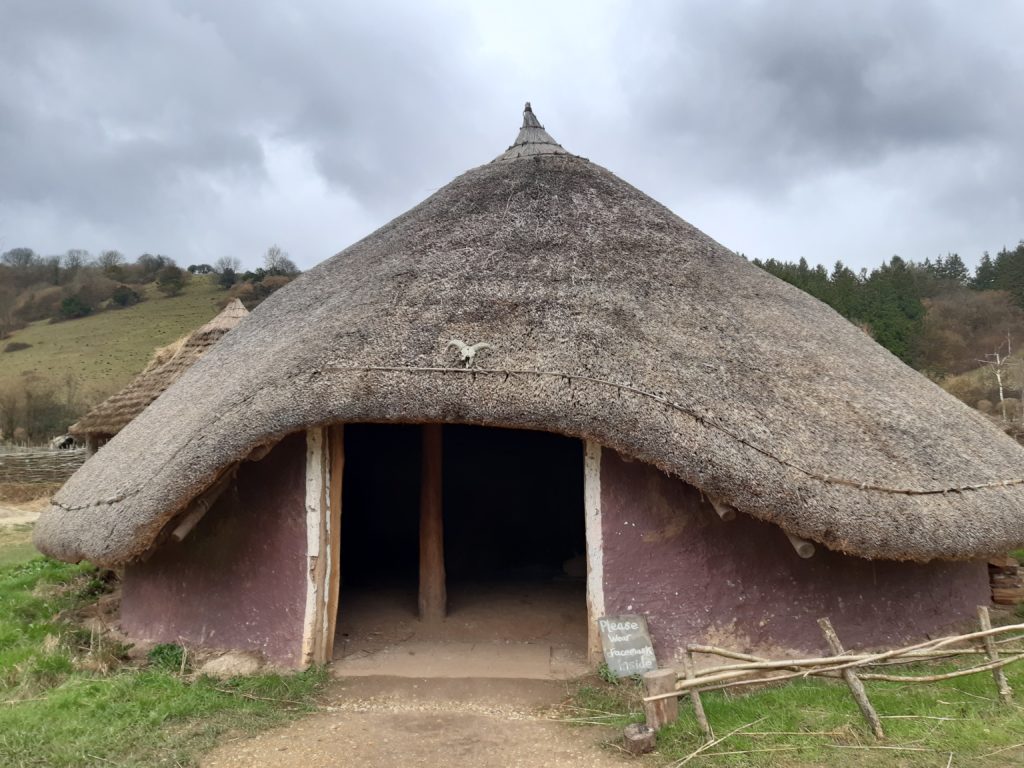
Unsurprisingly, the Roman villa is completely unharmed, although we have removed the unique Roman ceramic chimney pot we had custom-created for the build!
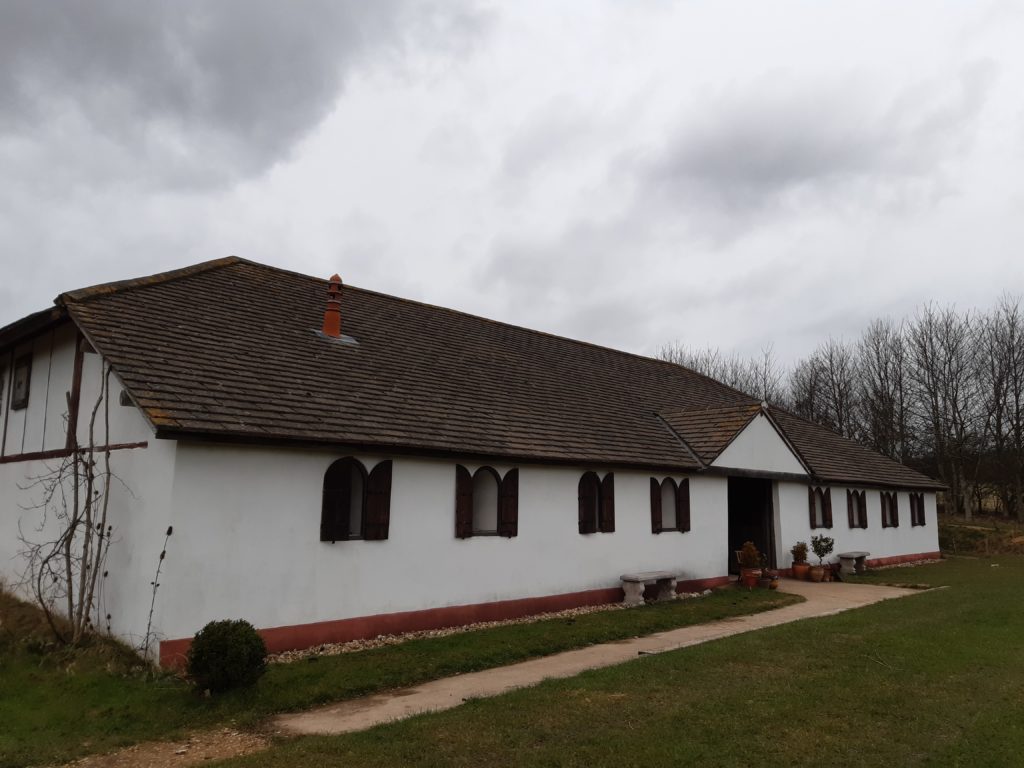
The two Saxon halls are unique at the site, in that the archaeology for both houses was found in Chalton, only a stone’s throw from where the reconstructions now stand at Butser. This makes the damage they sustained in the storm even more interesting – while the other buildings have been removed from their original geography, the two Saxon halls are still situated in the same valley where they stood hundreds of years ago — and so, had Storm Eunice hit when the original houses stood, it may well have caused exactly the same damage.
Of these two buildings, the newer – still undergoing construction and due to be completed in early April – seems completely unharmed. However, the older Saxon hall has unfortunately suffered along the apex of its roof, and will need repairs.
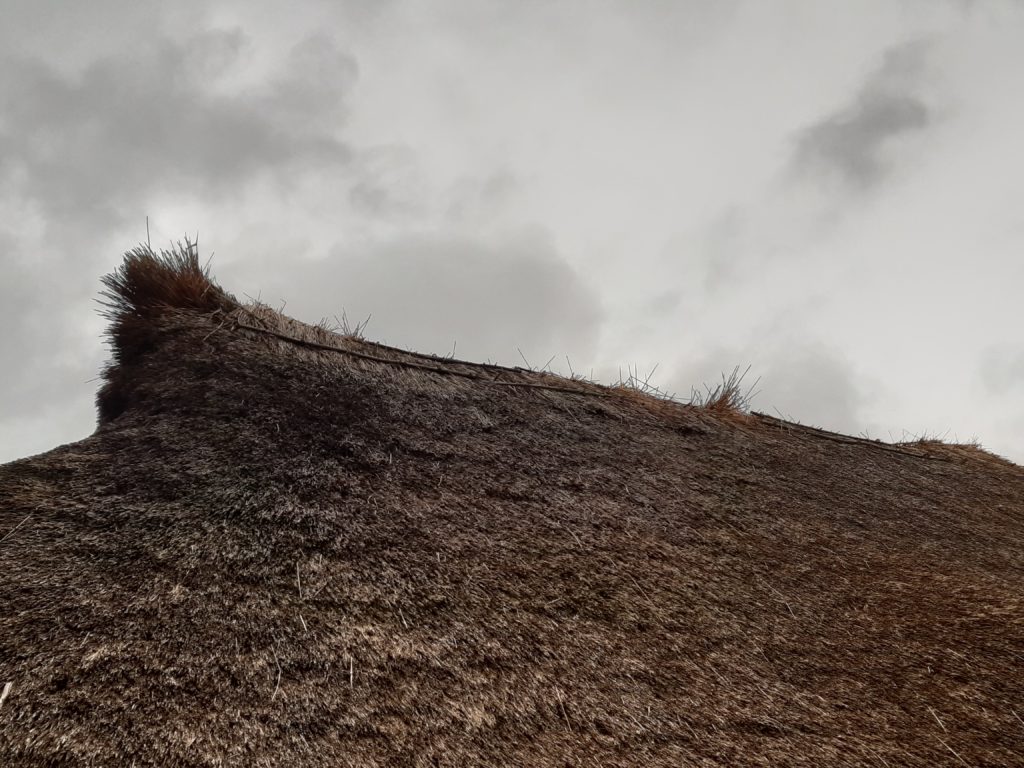
But take heart! We’re not too worried. In fact, it’s kind of amazing that these structures survive so well, and kind of humbling to think about how connected we are to the people who once lived in them at moments like these. Even with all our modern advancements, in 2022, we’re as powerless against the weather as they were.
We’ve already begun the repairs process, and will be continuing to study and fix the damage for the next few weeks. Here’s the eave of the Danebury CS1 with a temporary fix!
Now more than ever, we’re so grateful for all your support. Even though none of the damage is major, there’s still quite a lot of it to get through! Whether you have visited us once or a hundred times, whether you donate through Butser Plus or just follow us on socials, if you’re reading this, thank you 💚
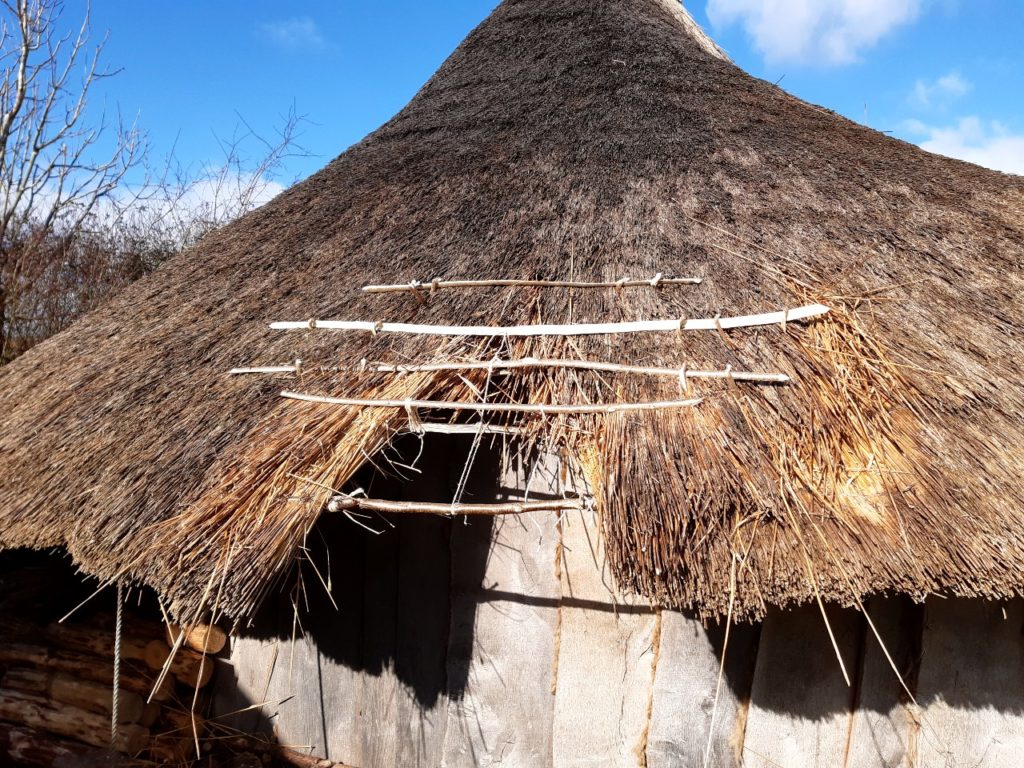
comments
comments for this post are closed